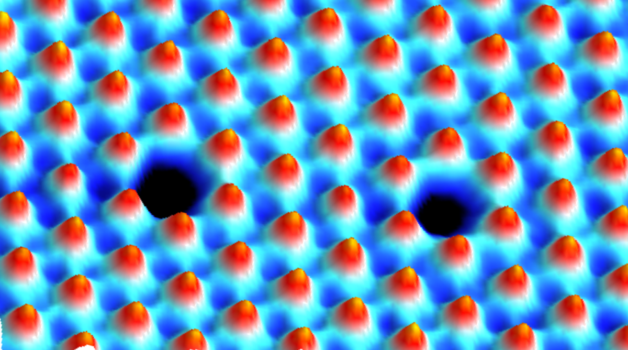This post has been adapted from Berkeley Lab Newscenter

Atomically thin, 2D semiconductors known as TMDs or transition metal dichalcogenides are not perfect, but their imperfections can actually be a good thing.
Understanding how defects are structured at the atomic scale, how they are created, and how they interact with electrons are the first steps to designing new advanced materials. However, no one has been able to link useful properties like optical absorption and emission, conductivity, or catalytic function to specific defects in TMDs.
Now, two studies led by Foundry researchers have revealed surprising details on how some atomic defects emerge in TMDs, and how those defects shape the 2D material’s electronic properties. Their findings could provide a more versatile yet targeted platform for designing 2D materials for quantum information science and smaller, more powerful next-generation light-based electronics (optoelectronics).
In the world of materials science, many researchers assumed that the most abundant defects in TMDs were the result of missing atoms or “vacancies” of sulfur in tungsten disulfide (WS2), or selenium vacancies in molybdenum diselenide (MoSe2).
But as reported in Nature Communications, the researchers found that the defects previously observed with other methods were actually created by oxygen atoms replacing sulfur or selenium atoms.
Key to their finding was the use of the Molecular Foundry’s atomic force microscope (AFM), with a single carbon monoxide (CO) molecule acting as an ultrasharp “tip” or probe, and scanning tunneling microscope (STM).
In the researchers’ second study, published in Physical Review Letters, they demonstrated how to deliberately create chalcogen vacancies by heating a sample of WS2 in vacuum up to 600 degrees Celsius (1,112 degrees Fahrenheit), resulting in a thermal energy that causes the atoms to vibrate.
The scientists also discovered that “spin-orbit interaction” – which relates to the properties of electrons orbiting around an atom’s nucleus and in their own inherent directional spin – plays a significant role in the electronic structure of chalcogen vacancies.
Now that the researchers have successfully demonstrated how to create chalcogen vacancies in TMDs, Schuler said that they plan to explore the engineering of atomic defects in other types of 2D materials, such as the creation of distinct spin-polarized states, which would be useful for realizing atomic quantum light emitters and other such devices.

